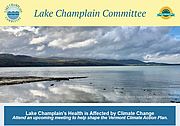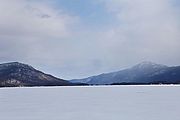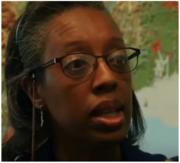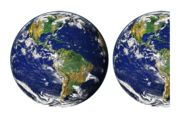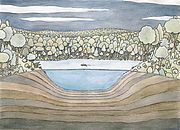Vermont is becoming warmer and wetter due to climate change. Specifically, the Vermont Climate Assessment 2021 notes that both summer and spring precipitation have increased in the Green Mountain State. The Assessment cautions that “[t]his spring precipitation . . . can make farm operations difficult.” Read...
News from Selected Category
Monday, October 4th 2021
To the Vermont Climate Council,
...Significant parts of the world are literally on fire, and big portions of the rest of the nation are (or were recently) underwater. Vermont itself has recently missed being hit by not one but two massive tropical storms by mere miles, and earlier forecasts for the path of both Henri and Ida warned they might go directly through our state. And, of course, Vermonters are already experiencing more extreme heat and heavy precipitation events climate scientists have predicted for years. Read...
The state of Vermont is developing its Climate Action Plan and drafters need your input to produce a forward-thinking guidance document that addresses the climate emergency. Seven events to gain public comments will be held throughout the state beginning tomorrow and running through early October. Read...
Photosynthetic bacteria, gelatin, and concrete are the building blocks of a new type of material: living concrete! Researchers at the University of Colorado, Boulder, funded by the Department of Defense, formed the new substance. Minerals in the concrete are deposited by cyanobacteria; in contrast to the typical greenhouse gas-emitting process required in the production of regular concrete, cyanobacteria absorb carbon dioxide through the photosynthetic process.
Read...The time to prepare for future floods is now. Communities that took steps to protect themselves in advance of Tropical Storm Irene were often able to avoid some of the devastation that confronted their neighbors. Read...
While the Adirondack region is in the temperate deciduous forest biome, it is also on the edge of several other biomes – the boreal forest, grassland, woodland, and shrubland biomes. A biome is a naturally occurring habitat for certain species. Being on the edge of several could cause the Adirondacks to see shifts in temperature and moisture sooner than the surrounding area.
Vermont State climatologist Lesleay-Ann Dupigny-Giroux answers pressing questions about the effects climate change will have on the Northeast. Dupigny-Giroux contributed to the Fourth National Climate Assessment as the lead author of the Northeast chapter. The National Climate Assessment was a report published on November 23, 2018, which focused on environmental, human health, and economic impacts of climate change in the U.S. VT Digger.
From July 18 to August 16, a stretch of 29 days, the daily high temperature in Burlington, Vermont never fell below 80 degrees F. The streak eclipsed the previous record for consecutive days over 80 by four days. Keep in mind, the streak of hot days began AFTER temperatures climbed into the 90s for six straight days earlier in July. During that heat streak the region set another record, the highest ever daily low temperature of 80 degrees.
How many planets does it take to support your lifestyle? Take a quiz from the Global Footprint Network to discover your biggest areas of resource consumption and learn what you can do to lighten your load on the planet. Click here to access the footprint calculator.
Read...Show your support for the vital role science plays in our health, safety, economies and governments by joining in the Earth Day March for Science.
Read...Walden Pond is a 62-acre kettle pond in sand and gravel that formed around a block of melting glacial ice about 15,000 years ago. It was here that Thoreau produced one of the first maps of an American lake bed by lowering a weighted line through winter ice.
Read...
